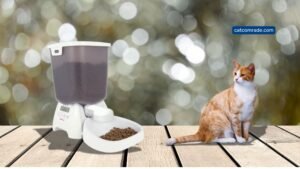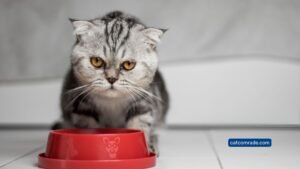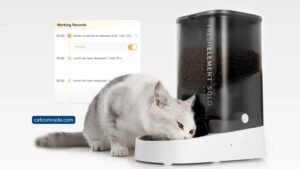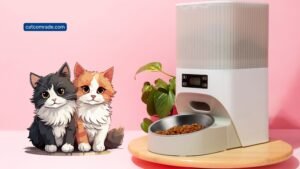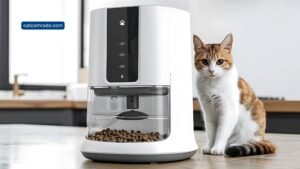DIY Automatic Feeder for Cats: Easy Steps for Smart Pet Feeding
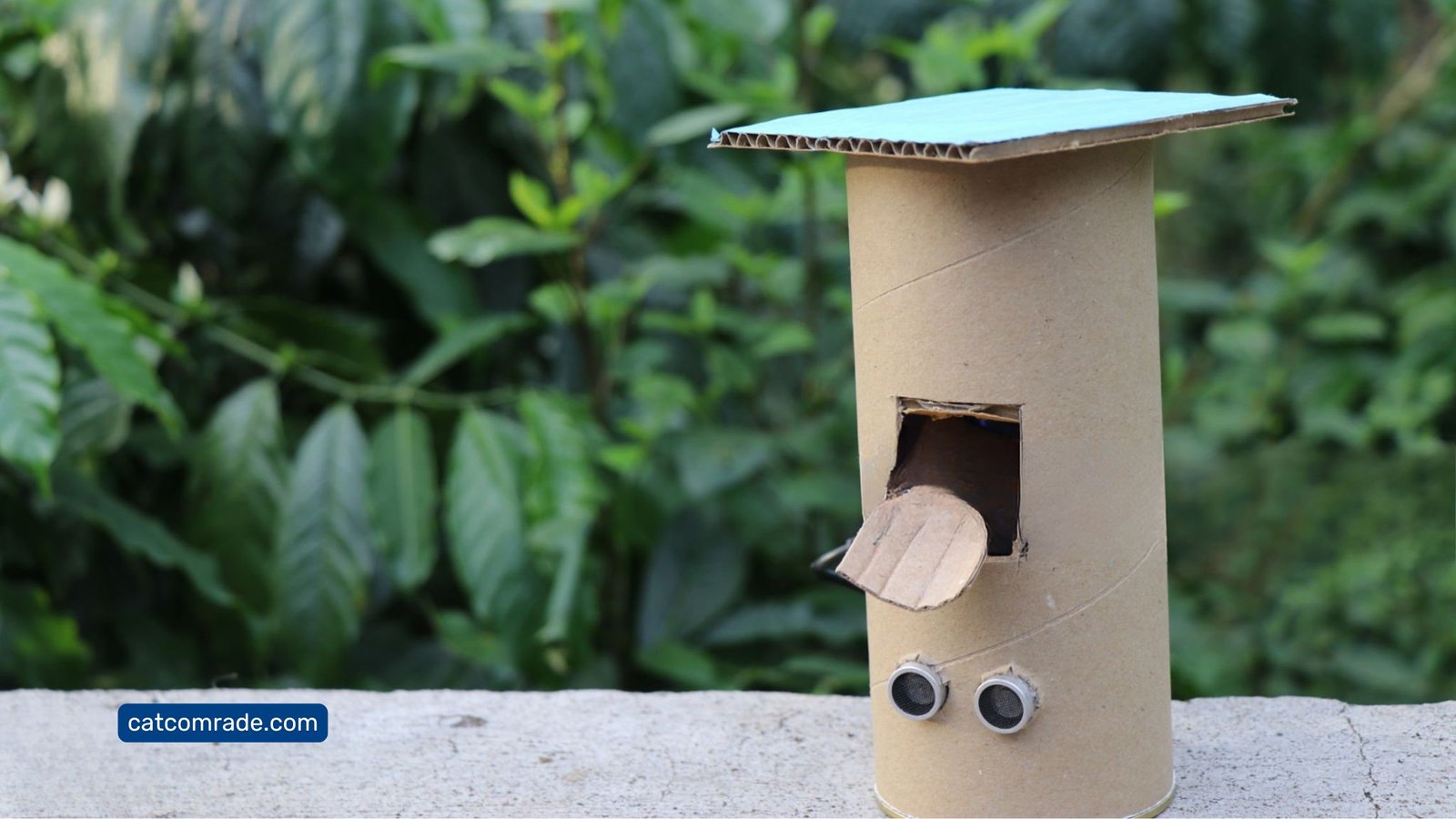
Are you tired of rushing home just to feed your cat on time? What if you could set up a simple device that feeds your furry friend automatically, even when you’re away?
A DIY automatic feeder for cats can make your life easier and keep your pet happy and well-fed without constant effort. You’ll discover easy steps to create your own feeder using affordable materials.
Keep reading to learn how you can save time, reduce stress, and ensure your cat never misses a meal again.
Benefits Of Automatic Cat Feeders
Automatic cat feeders help pet owners feed their cats on time and properly. These devices offer several benefits for both cats and owners.
They keep feeding consistent and help control how much food cats eat. Owners gain freedom and less stress from daily feeding tasks.
Improved Feeding Schedule
Automatic feeders deliver food at set times. Cats get meals regularly without delays. This helps keep their digestion healthy. A stable schedule reduces begging and anxiety in cats. Feeding on time supports good habits and well-being.
Portion Control
These feeders release exact food amounts. Overeating and obesity risks decrease. Portion control helps maintain a healthy weight. It is easier to manage special diets. Cats get the right nutrition every day.
Convenience For Owners
Owners save time and effort with automatic feeders. No need to wake up early or rush home. Feeding becomes simple and stress-free. It suits busy lifestyles and travel plans. Peace of mind comes from reliable feeding.

Credit: www.youtube.com
Essential Components
Building a DIY automatic feeder for cats needs a few key parts. These parts work together to feed your cat on time. Knowing the essential components helps create a feeder that works well.
Each part has a clear role. Food stays fresh, releases properly, and feeds at the right time. Understanding these parts makes your project easier and more effective.
Food Storage Container
The food storage container holds your cat’s food safely. It must keep the food dry and fresh. Choose a container that seals tightly to stop air and moisture.
Size matters. Pick a container that fits the amount of food your cat needs. A clear container helps you see when to refill. Use materials that are safe and easy to clean.
Dispensing Mechanism
The dispensing mechanism releases food from the container. It controls how much food drops each time. Many DIY feeders use a rotating drum or a sliding door.
This part must work smoothly to avoid jamming. It should deliver the right portion size every time. Simple designs often work best and last longer.
Timer Or Controller
The timer or controller sets feeding times. It tells the dispenser when to release food. You can use a basic mechanical timer or a small electronic board.
Programmable timers allow feeding at different times each day. This keeps your cat on a regular schedule. Make sure the timer is easy to set and reliable.
Choosing The Right Materials
Choosing the right materials is very important for a DIY automatic feeder for cats. The materials affect how long the feeder lasts and how safe it is for your pet. Using the right parts makes the feeder work better and keeps your cat healthy.
Durable Containers
Pick containers that do not break easily. Plastic containers should be thick and strong. Metal containers must not rust or dent. A durable container keeps the food fresh and stops spills. It also stands up to daily use and cleaning.
Safe Food-grade Parts
Use parts made from food-grade materials only. These parts do not release harmful chemicals. Plastic or silicone pieces should be BPA-free. Food-grade materials protect your cat from toxins. Clean parts easily to avoid bacteria and mold.
Electronics And Power Sources
Choose electronics that are safe and reliable. Use low-voltage motors to save power. Batteries should last long and be easy to replace. Consider rechargeable options for less waste. Protect all wires and circuits from moisture and damage.
Step-by-step Assembly Guide
Building a DIY automatic feeder for your cat is easier than it seems. This guide breaks down each step clearly. Follow along to create a reliable feeder that saves time and feeds your cat on schedule.
Preparing The Container
Start by choosing a clean, sturdy container. It should hold enough food for several meals. Make sure it is dry and free from cracks. Drill a hole near the bottom for the food to come out. Smooth the edges to avoid food getting stuck. Place the container on a flat surface for stability.
Installing The Dispensing System
Select a simple dispensing mechanism like a rotating wheel or sliding door. Attach it firmly to the container’s hole. Test it to ensure food flows smoothly without jamming.
Use screws or strong tape for secure fitting. Adjust the size of the opening to control food amount.
Setting Up The Timer
Choose a timer that can turn the dispenser on and off. Connect the timer to the motor or manual trigger. Set the feeding times according to your cat’s schedule.
Double-check the timer works by running a test cycle. Place batteries or plug in the power source securely.
Testing And Adjustments
Testing and adjustments are key steps in building a DIY automatic feeder for cats. These steps ensure the feeder works well and your cat gets the right amount of food. Careful testing avoids wasted food and hungry pets.
Start by checking if the feeder dispenses the correct amount. Then, adjust portion sizes to match your cat’s needs. Watch for common issues and fix them early to keep the feeder running smoothly.
Checking Dispensing Accuracy
Run the feeder several times without your cat nearby. Measure the food released each time. Use a small cup or scale for accuracy. Check if the amount stays the same every time. Inconsistent portions mean you need more adjustments.
Adjusting Portion Sizes
Change the settings to increase or decrease the food amount. Most DIY feeders allow you to set portions manually. Start with small changes. Test the new portions to see if they fit your cat’s diet. Keep adjusting until the portions are just right.
Troubleshooting Common Issues
Watch for food jams or motor problems. Clean the feeder parts regularly to avoid clogs. Listen for unusual sounds that suggest a mechanical issue. Check the power source and connections. Fix problems quickly to avoid feeding delays.
Enhancing The Feeder
Enhancing your DIY automatic feeder can make feeding time easier and more fun. Small upgrades add great features that help both you and your cat. These changes improve the feeder’s function and make it smarter.
Adding Voice Or Sound Alerts
Voice or sound alerts can call your cat at feeding time. Record your voice or use a favorite sound to grab your pet’s attention. This helps your cat know when food is ready. It also creates a routine your pet can follow.
Incorporating Smartphone Controls
Smartphone controls let you manage feeding from anywhere. Use an app to set feeding times and portion sizes. This makes feeding flexible and easy. You can check and change settings without being home.
Customizing For Multiple Pets
Customize the feeder if you have more than one pet. Set different feeding times and portions for each animal. Use separate compartments or ID tags to avoid confusion. This keeps every pet happy and well-fed.
Maintenance Tips
Maintaining your DIY automatic feeder keeps it working well and safe for your cat. Regular care stops problems and keeps food fresh. Follow these simple tips to make your feeder last longer and serve your pet better.
Cleaning The Feeder
Clean the feeder every few days to avoid germs. Use warm water and mild soap. Rinse well to remove all soap. Dry completely before adding food again. Avoid harsh chemicals that can harm your cat.
Replacing Parts
Check the feeder parts regularly for wear and tear. Replace cracked or broken pieces quickly. Keep spare parts handy for easy fixes. This prevents feeding interruptions and keeps your cat happy.
Ensuring Food Freshness
Use fresh food to keep your cat healthy. Store food in a cool, dry place. Avoid letting food sit too long in the feeder. Clean leftover food daily to prevent spoilage and bugs.

Credit: www.reddit.com
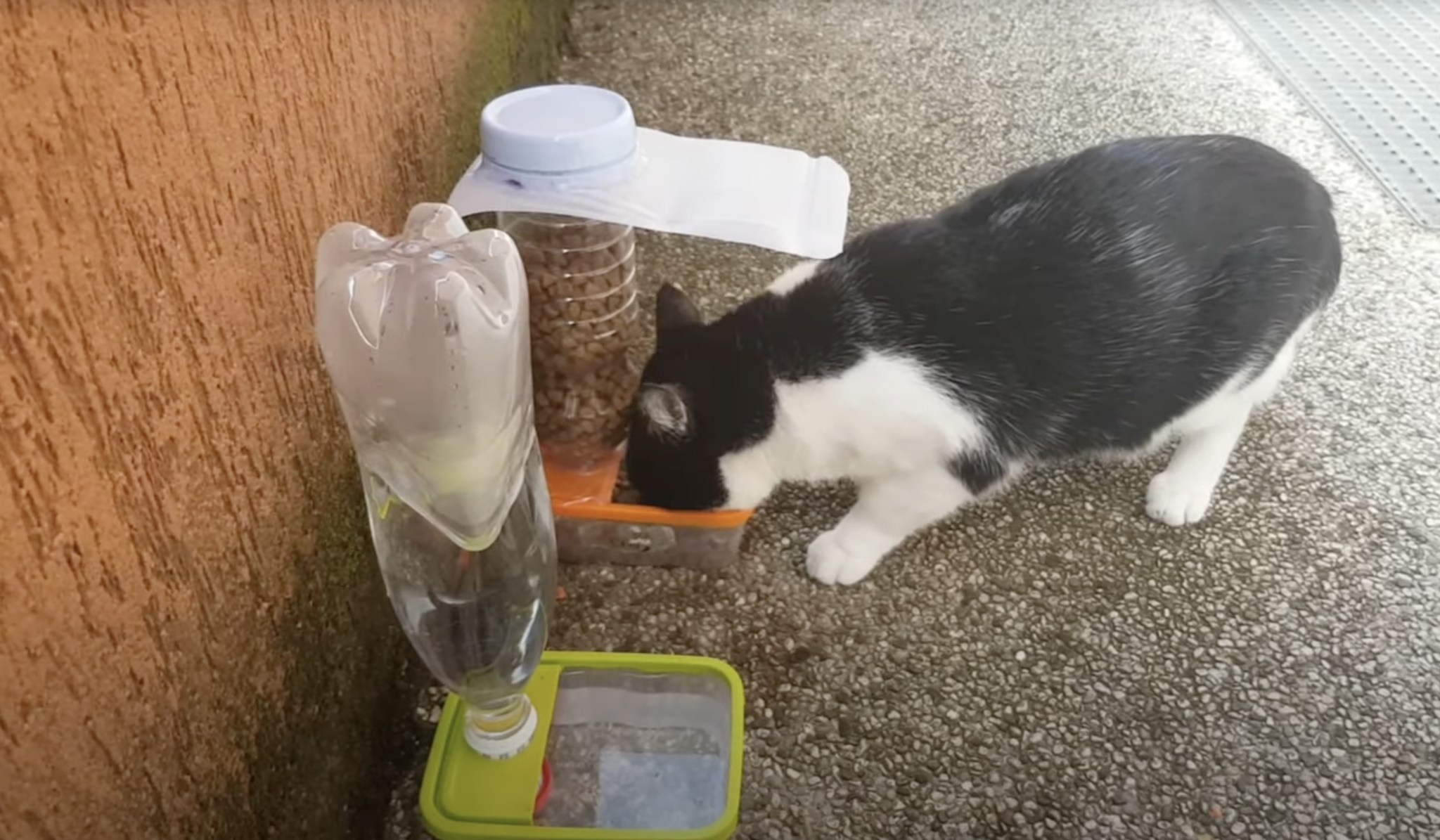
Credit: dlikrise.org
Frequently Asked Questions
How Does A Diy Automatic Feeder For Cats Work?
A DIY automatic feeder dispenses food at set times using a timer or microcontroller. It controls portion sizes and feeding schedules, ensuring your cat is fed regularly without manual effort.
What Materials Are Needed For A Diy Cat Feeder?
You typically need a food container, servo motor, microcontroller (like Arduino), power source, and basic tools. These parts help build a reliable, timed feeding mechanism for your cat.
Is Building A Diy Feeder Cost-effective?
Yes, DIY feeders cost less than commercial models. Using affordable materials and simple electronics reduces expenses while offering customization tailored to your cat’s needs.
Can I Customize Feeding Schedules With A Diy Feeder?
Absolutely. DIY feeders allow programming feeding times and portions. This flexibility helps match your cat’s dietary requirements and your daily routine perfectly.
Conclusion
Building a DIY automatic feeder for cats saves time and effort daily. It helps feed your cat on schedule without stress or delays. You control when and how much food your cat gets. This project is easy, affordable, and useful for any cat owner.
Enjoy peace of mind knowing your pet eats on time. Try making one and see how it fits your routine. Small steps can make pet care much simpler and better.

